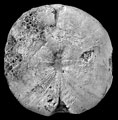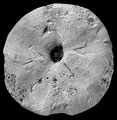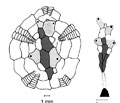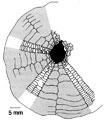The Echinoid Directory
Desorella Cotteau, 1855, p. 713
[=Desoria Cotteau, 1855, p. 221 non Nicolet, 1842 ]
| Diagnostic Features |
|
|---|---|
| Distribution | Upper Jurassic (Bajocian?, Oxfordian-Kimmeridgian), France, UK. |
| Name gender | feminine |
| Type | Hyboclypus elatus Desor, in Agassiz & Desor, 1847, p. 152, by subsequent designation of Cotteau, 1873, p. 333. |
| Species Included |
|
| Classification and/or Status | Stem group Irregular; Desorellidae |
| Remarks |
|





